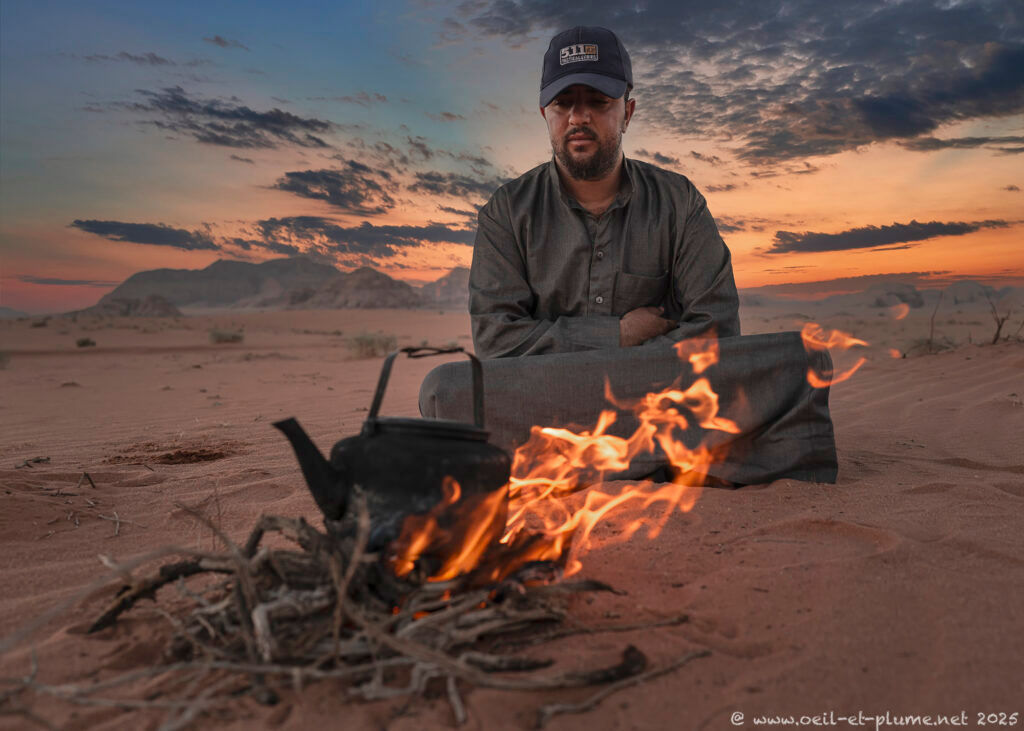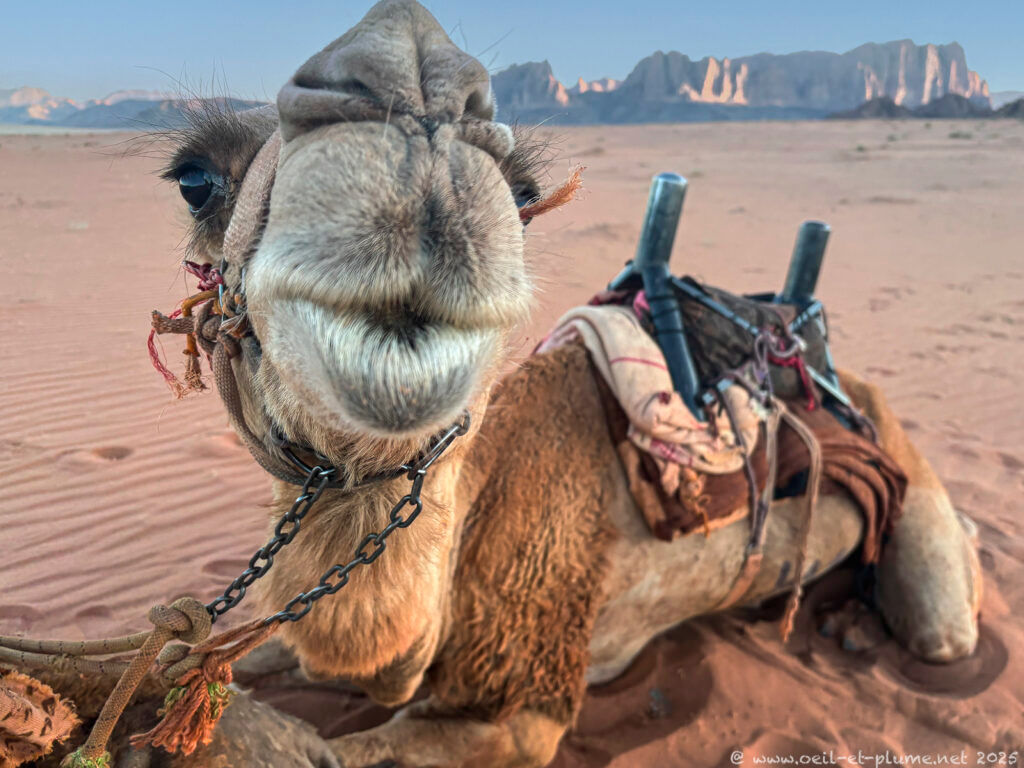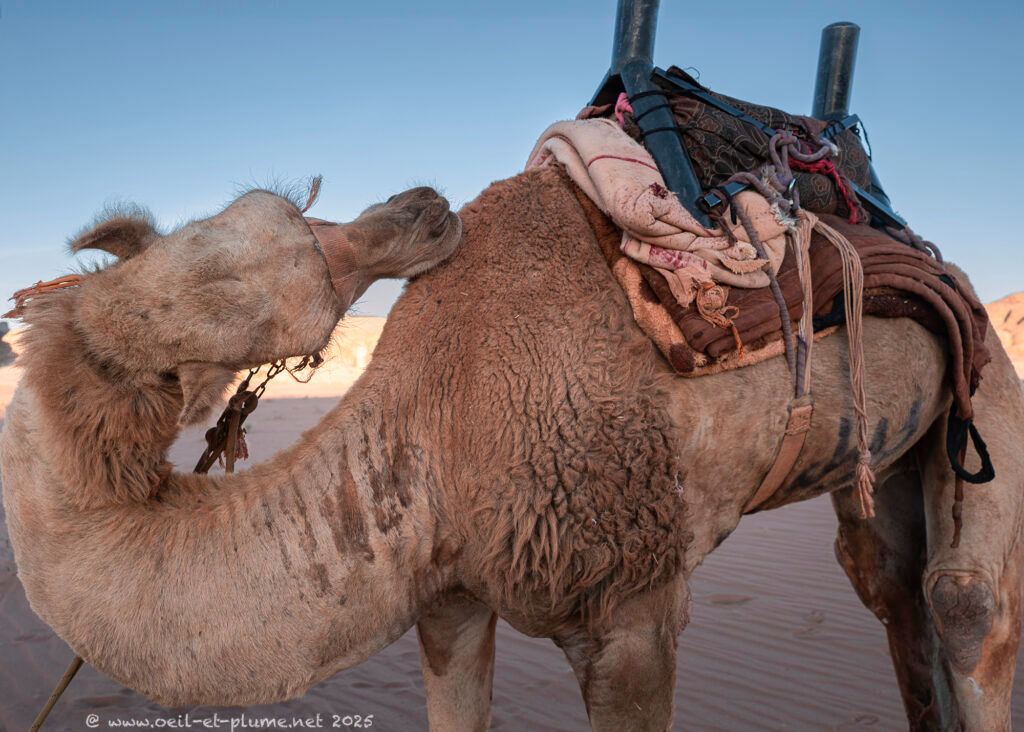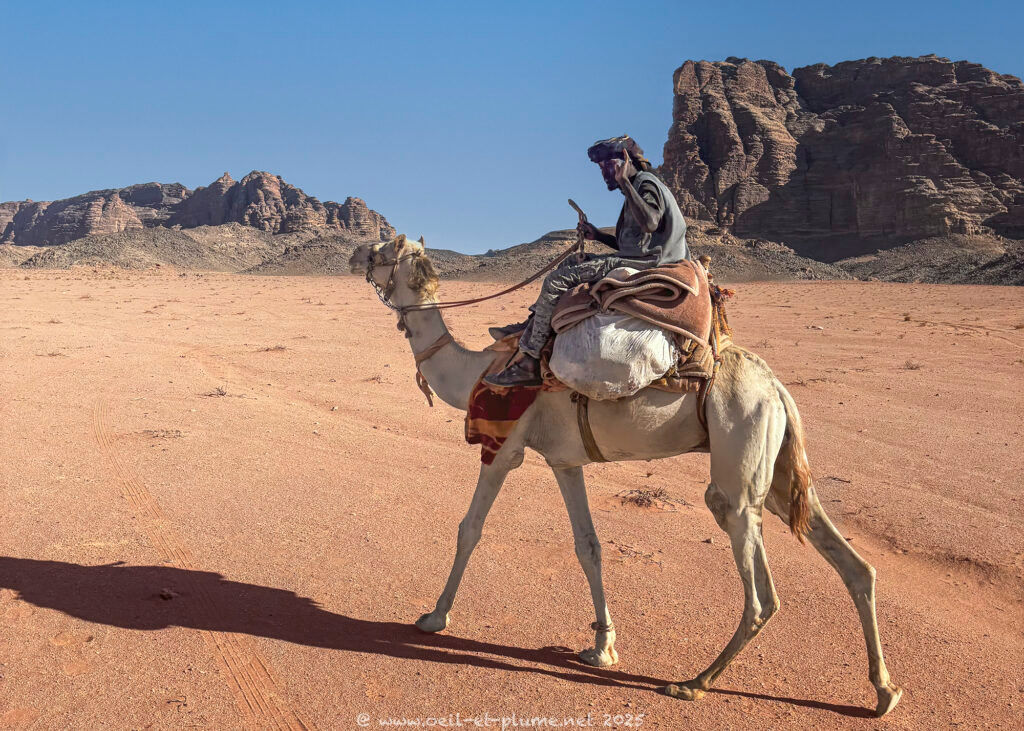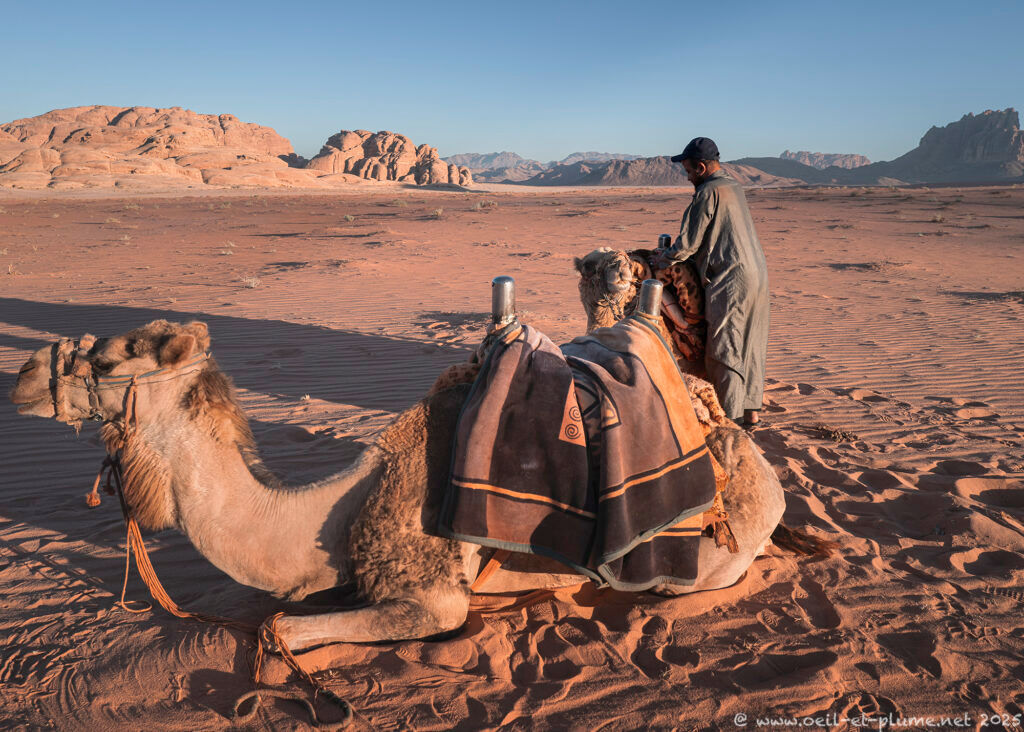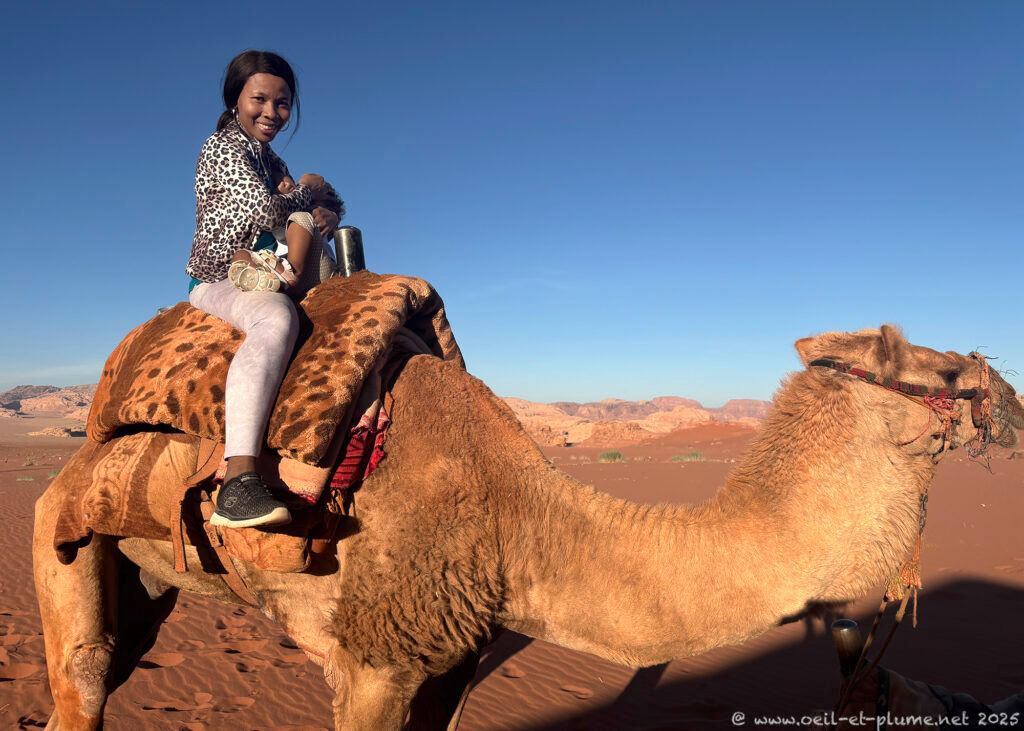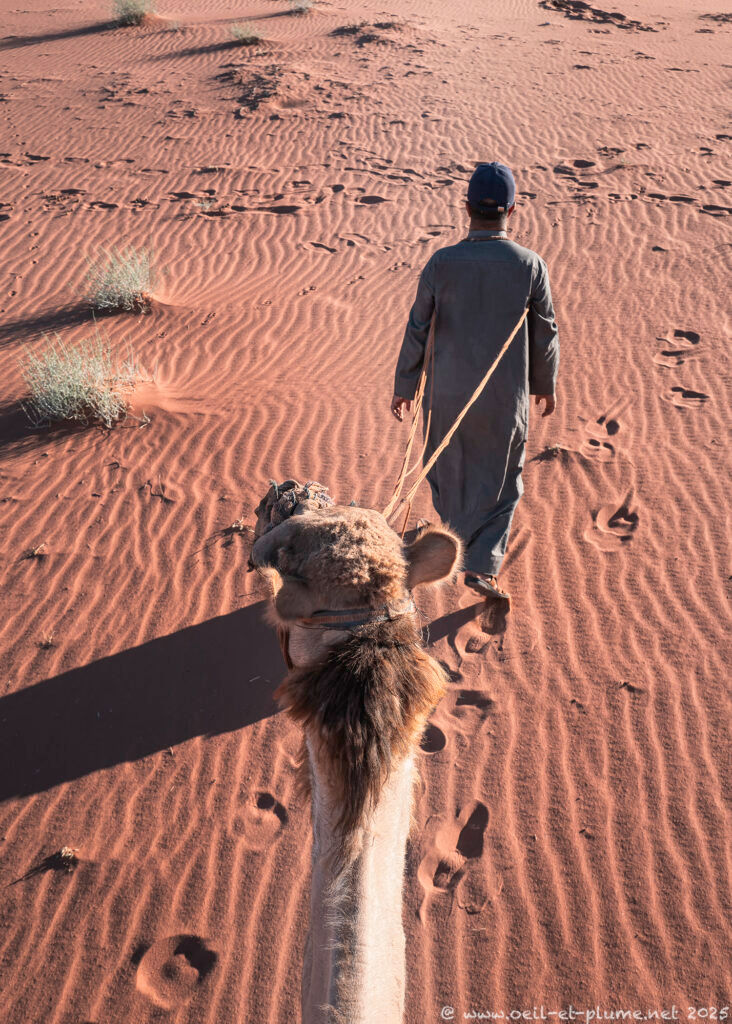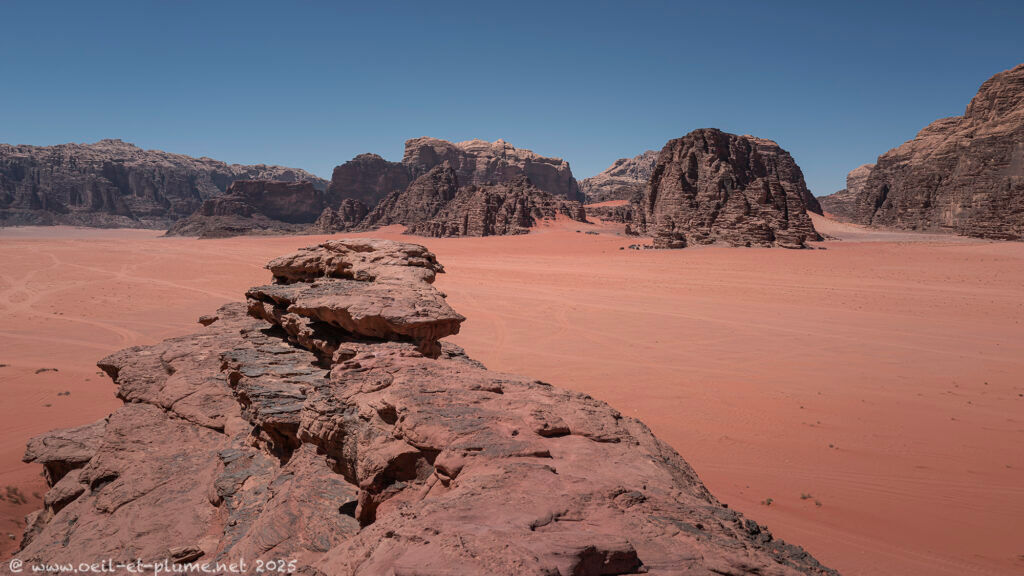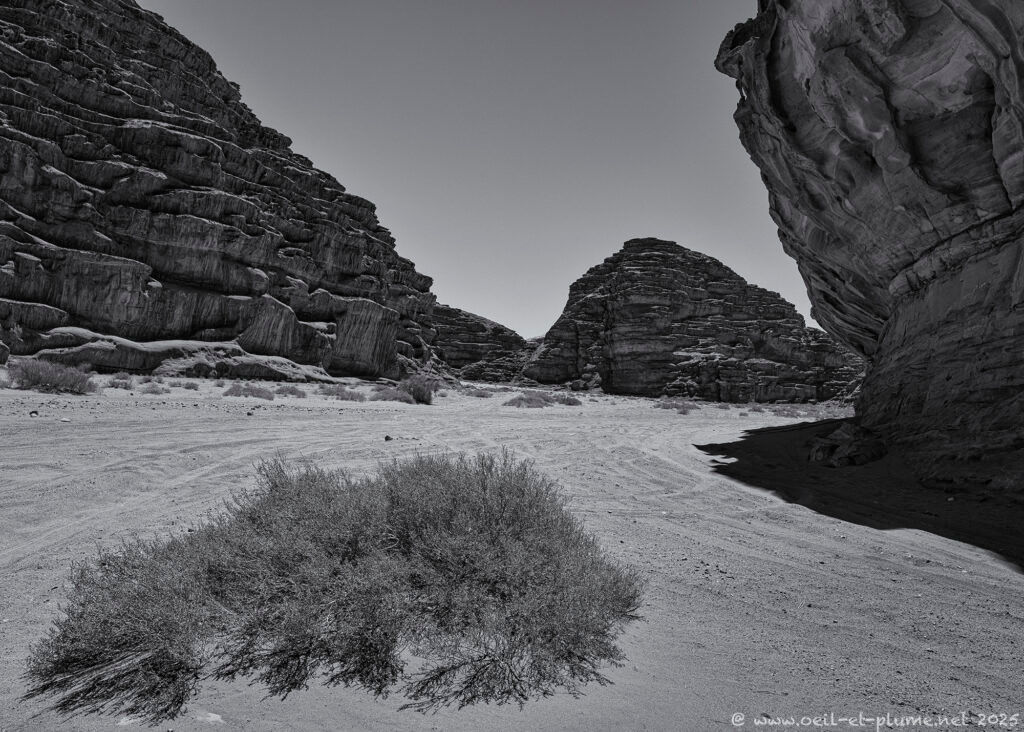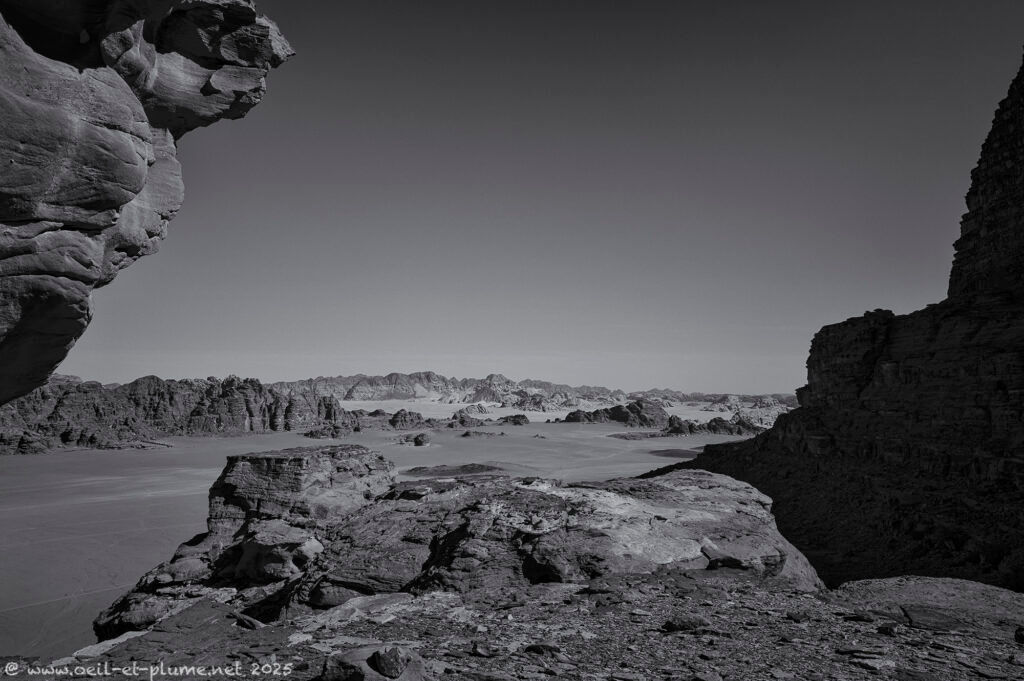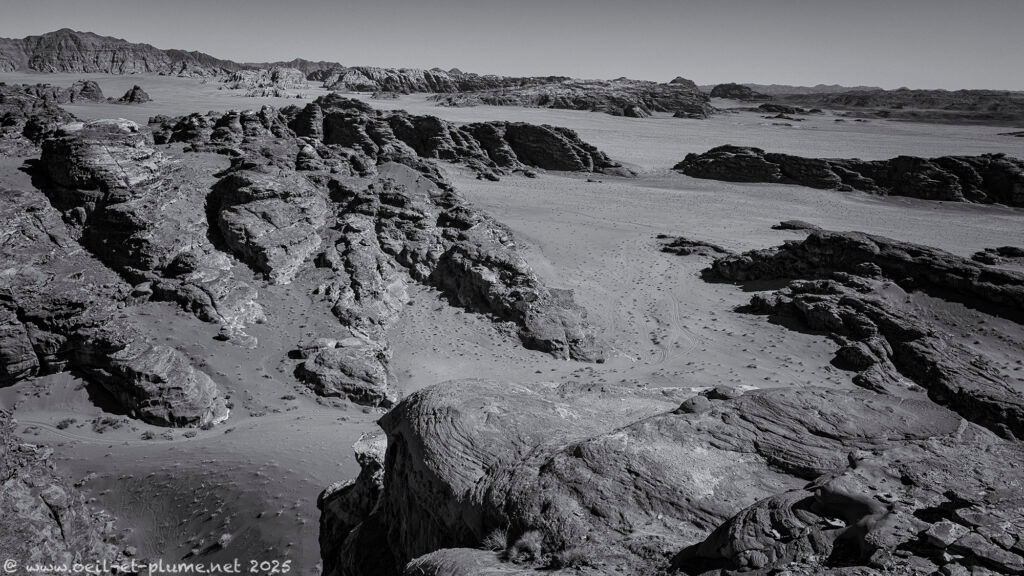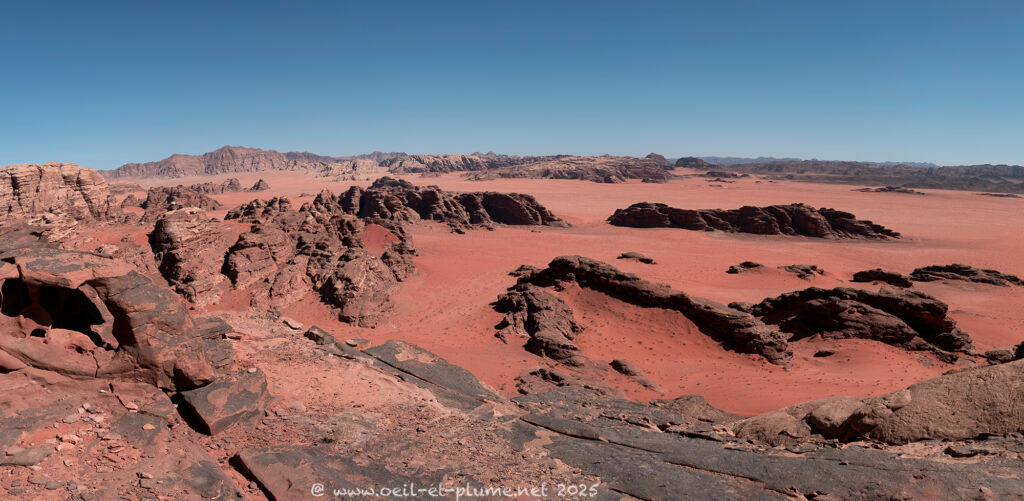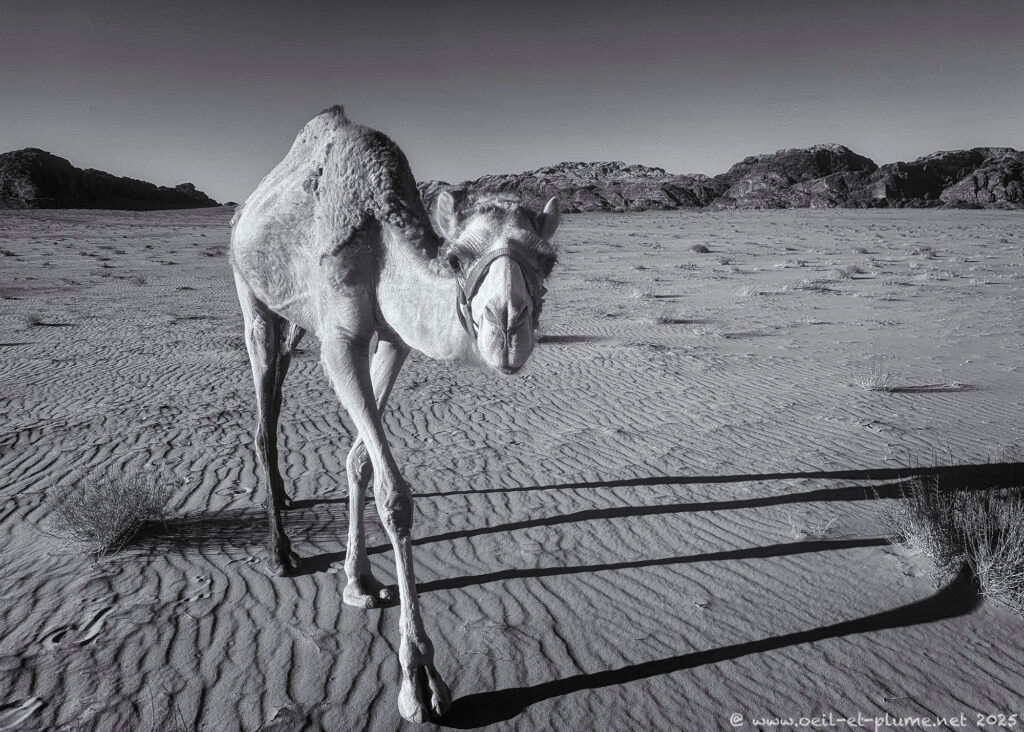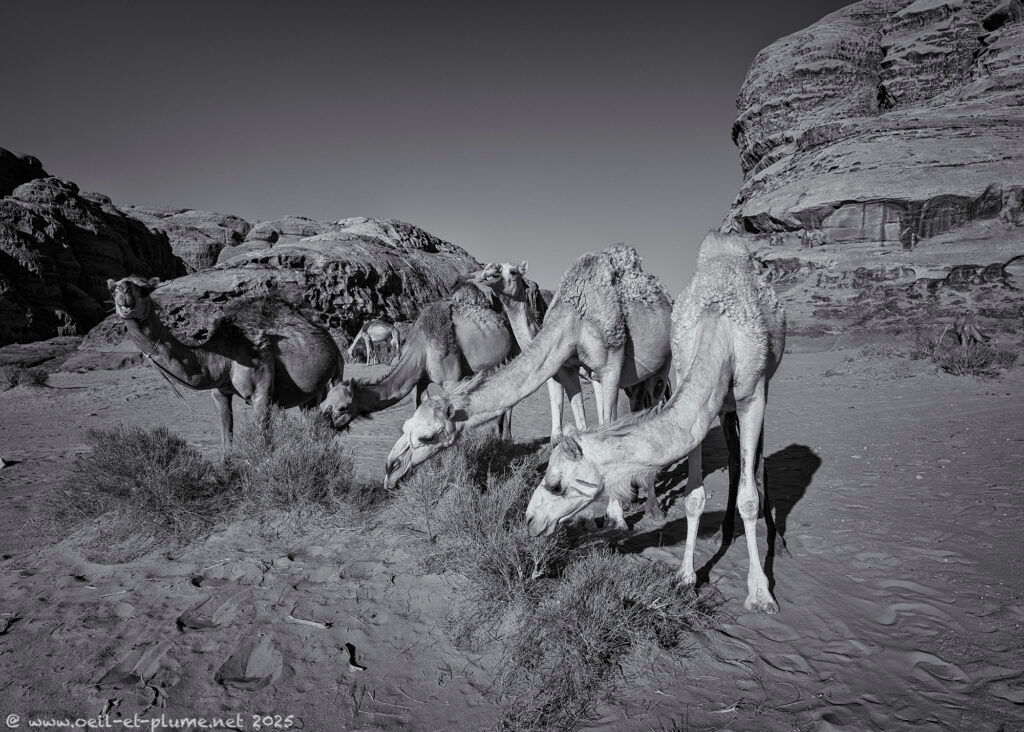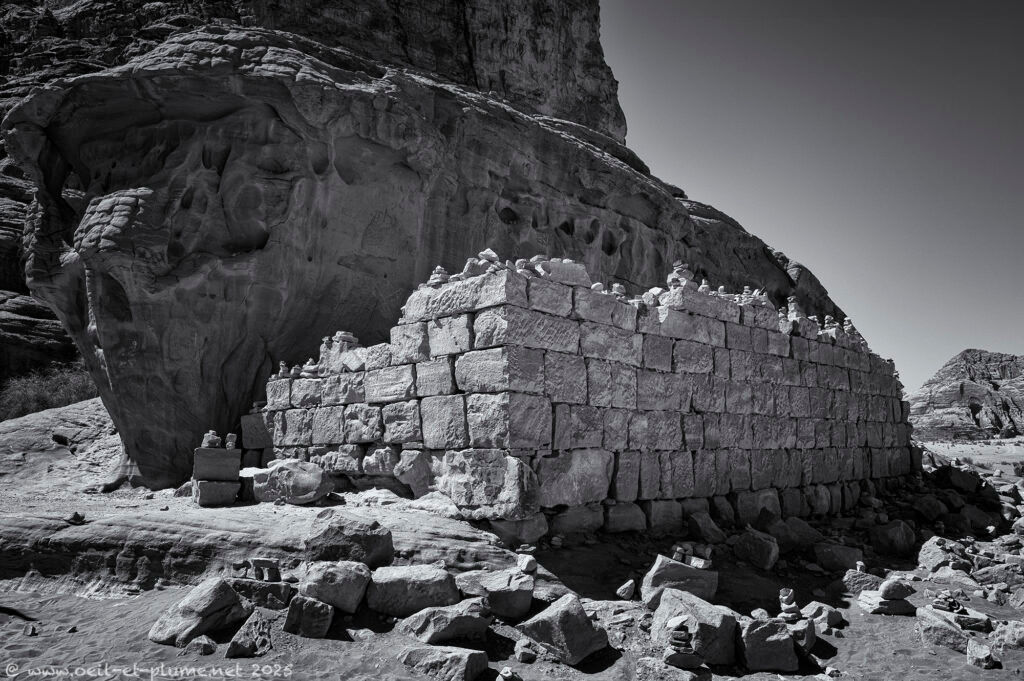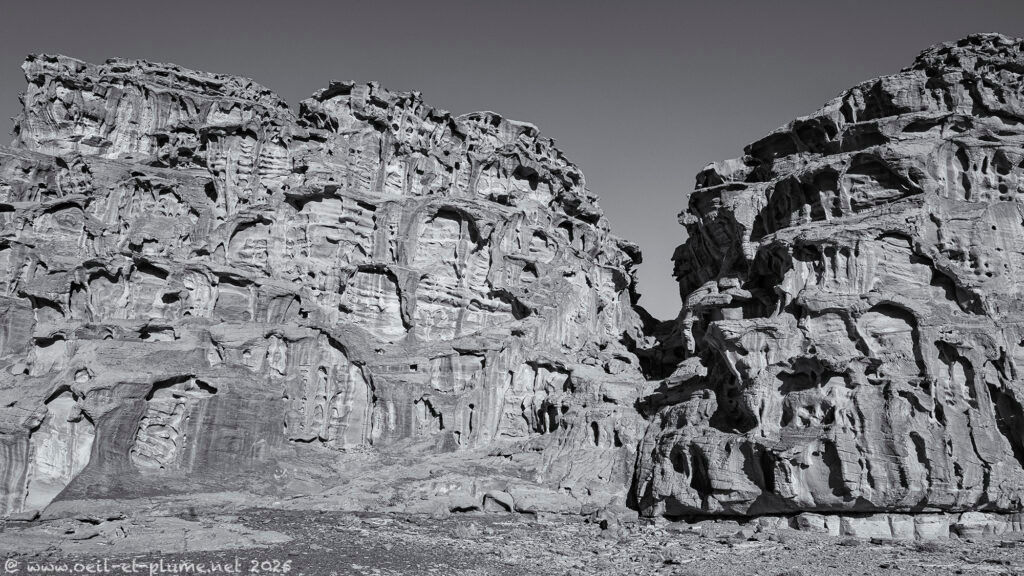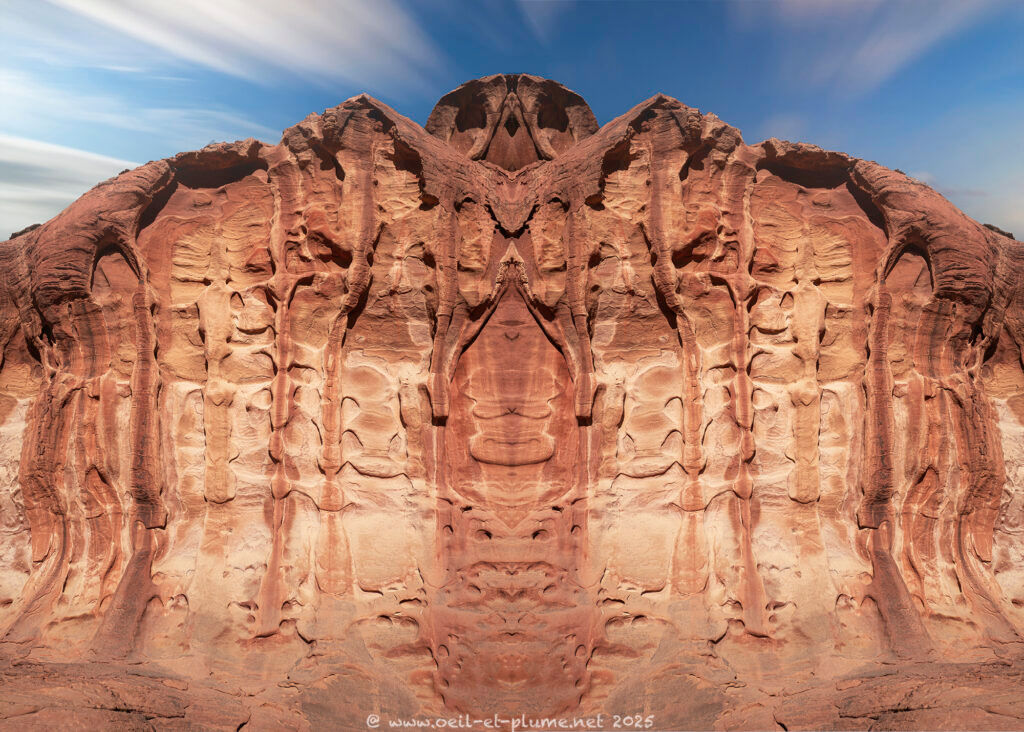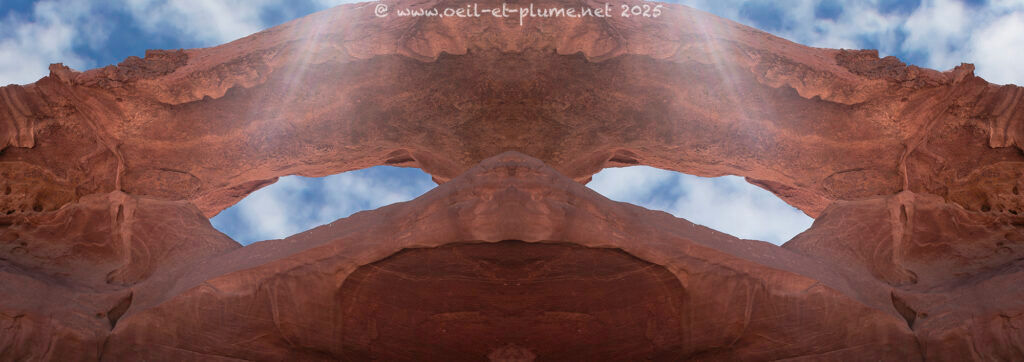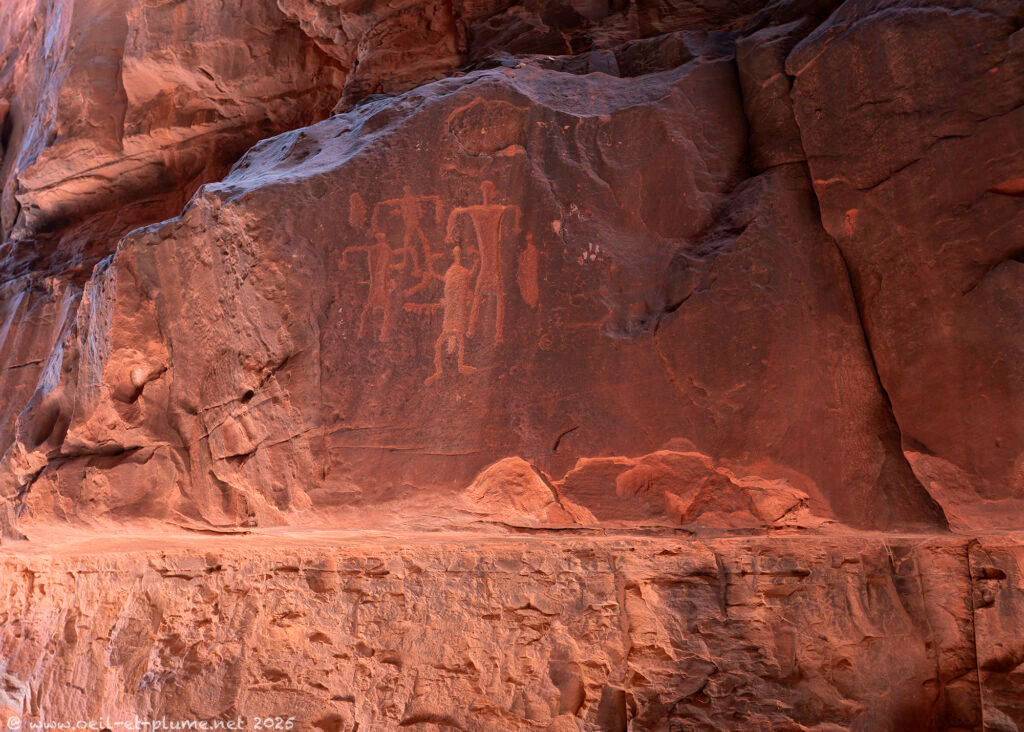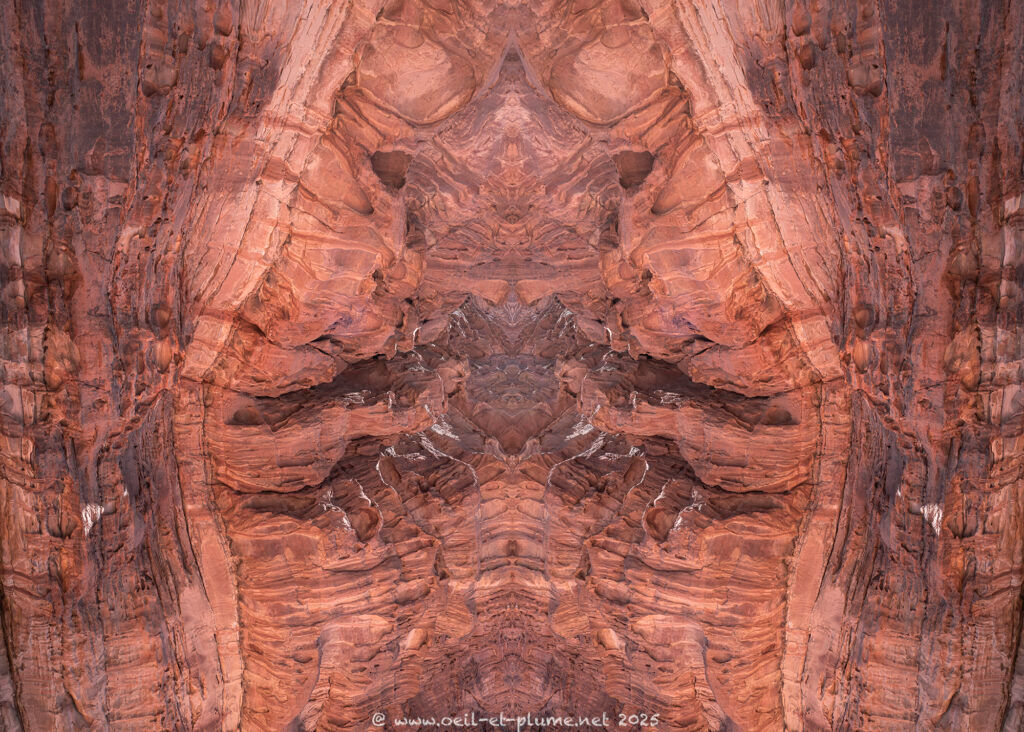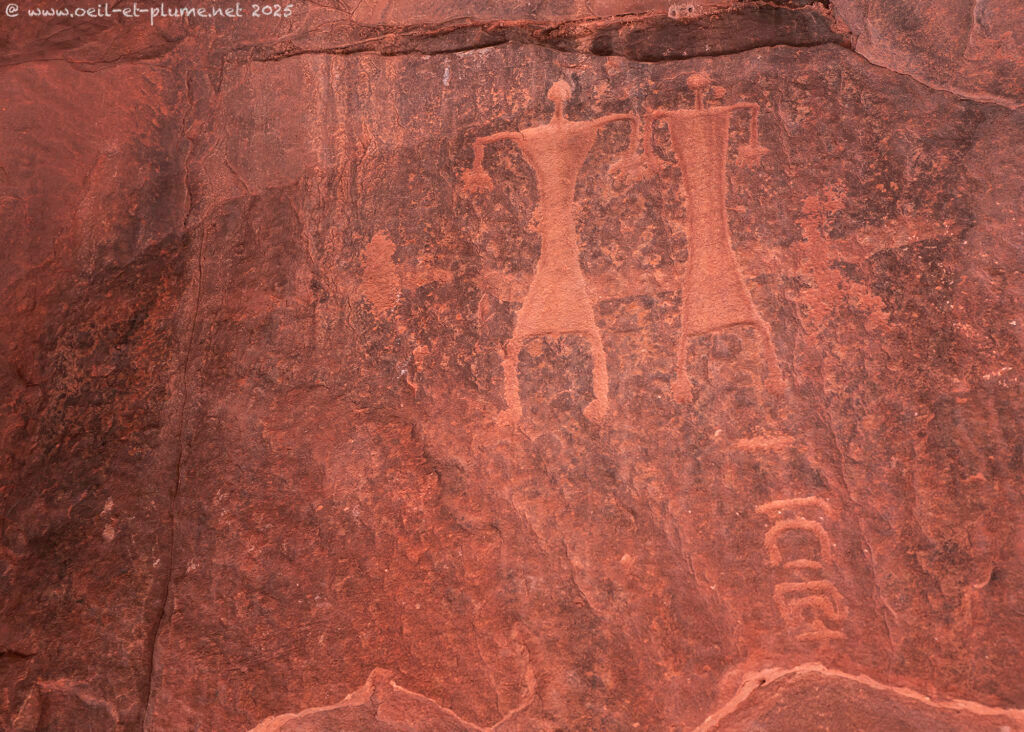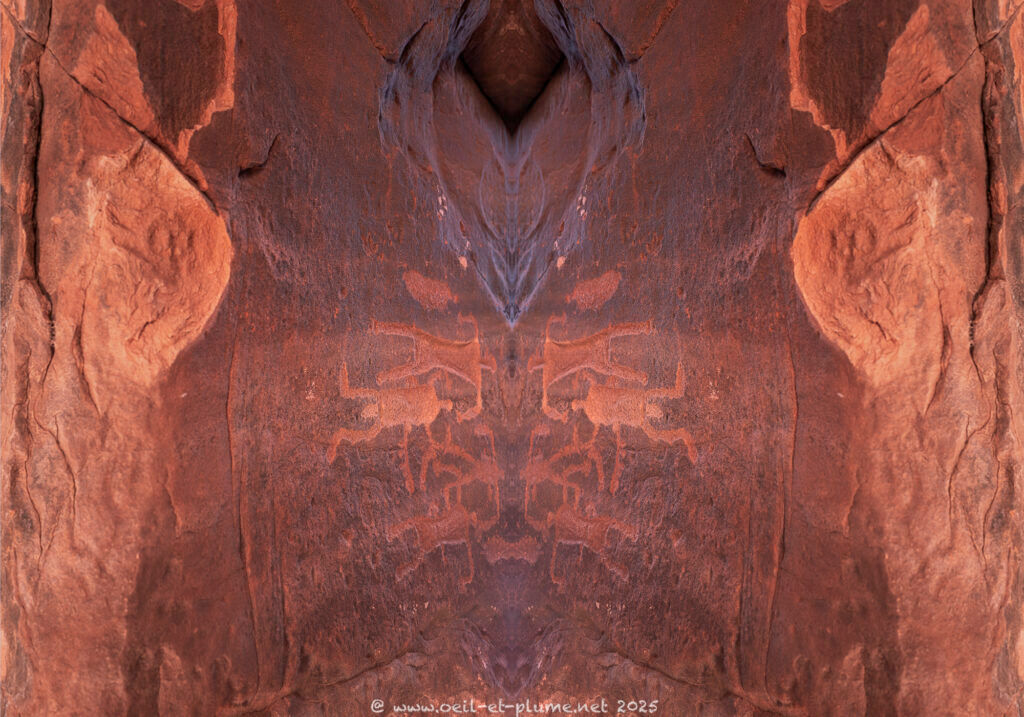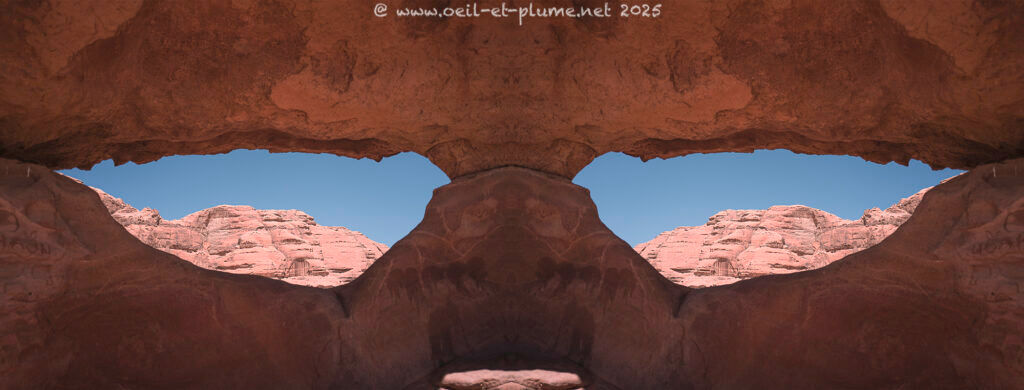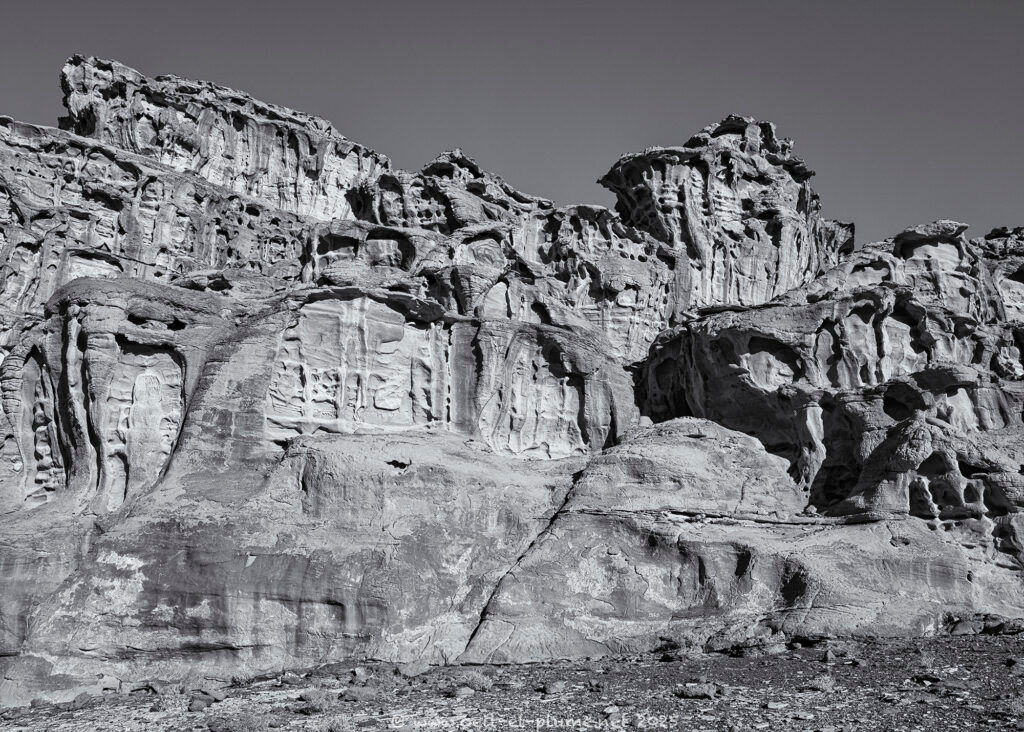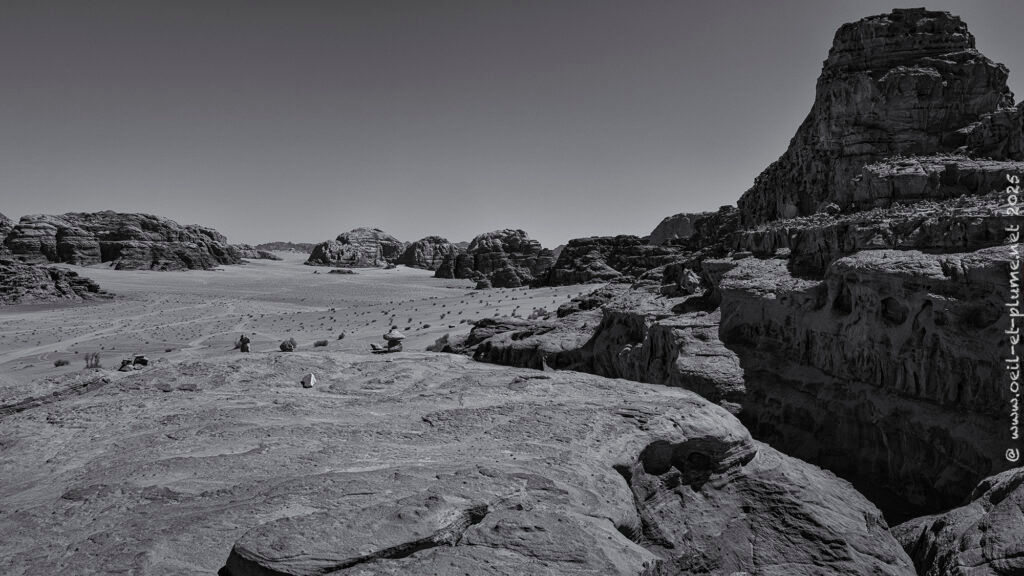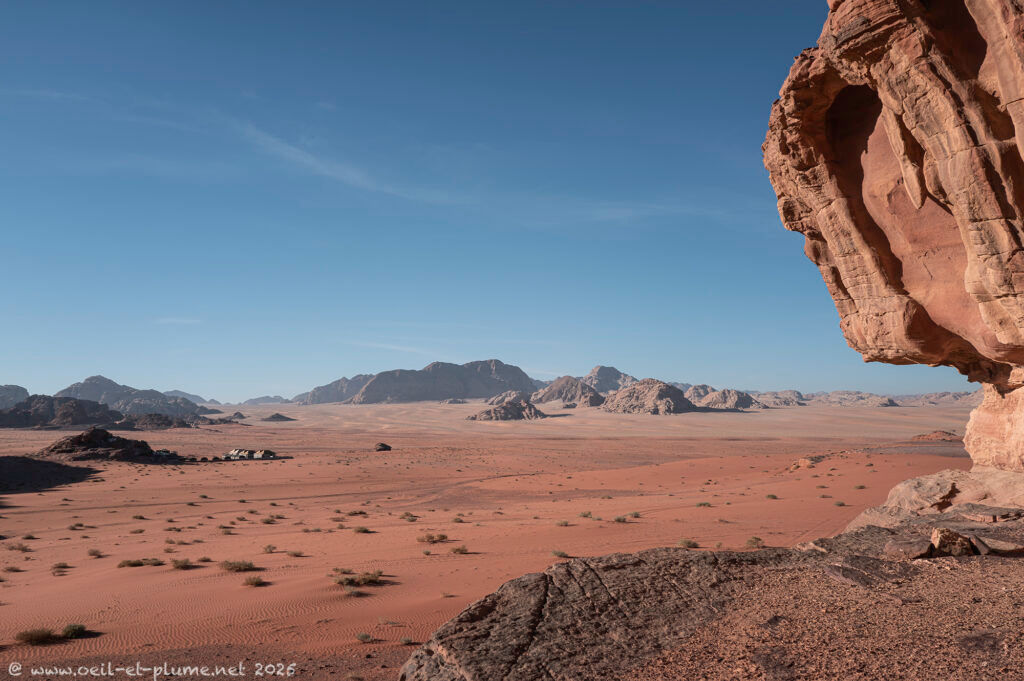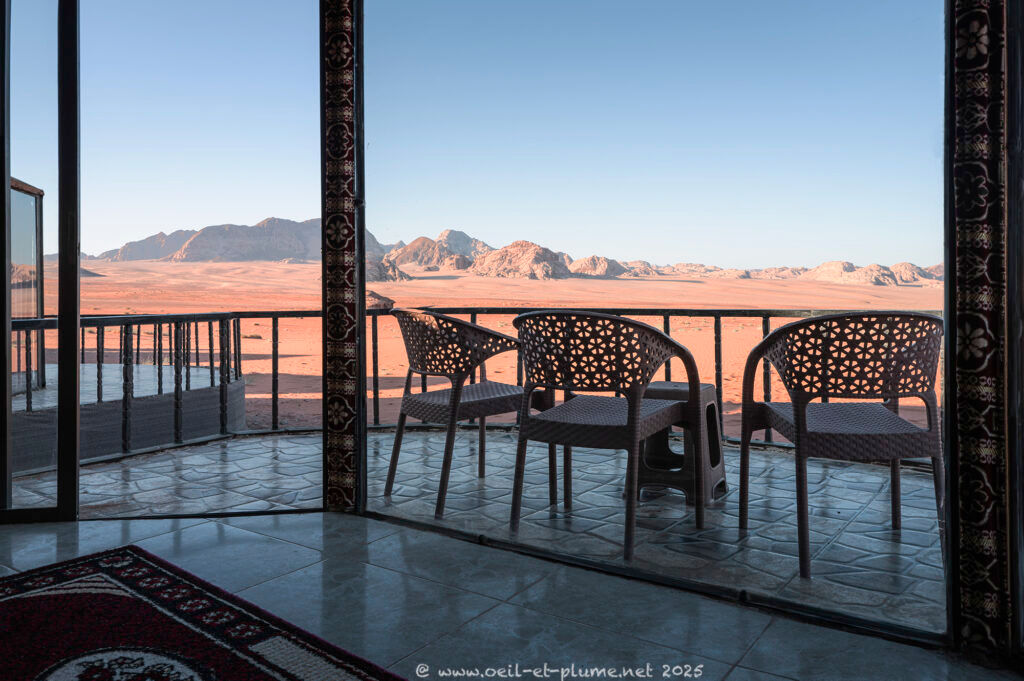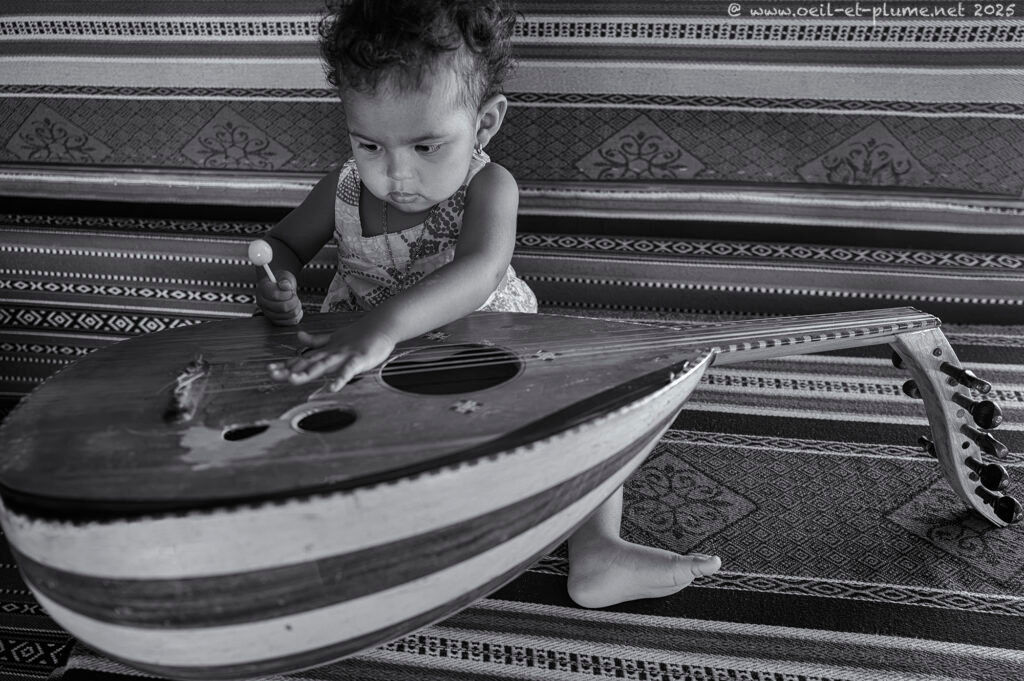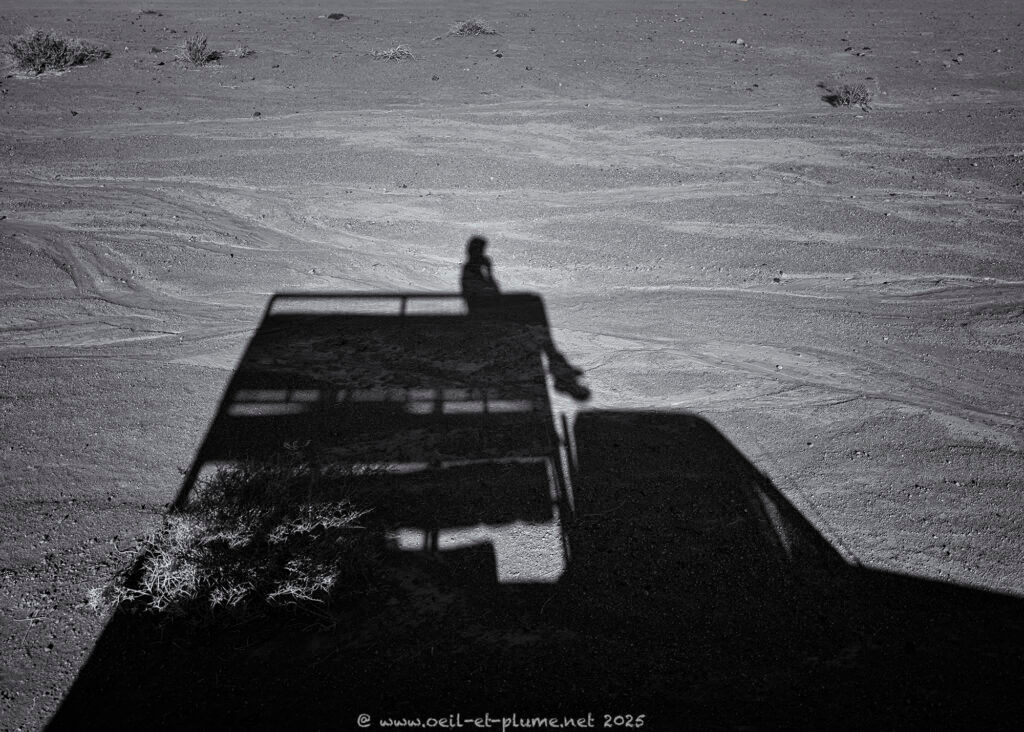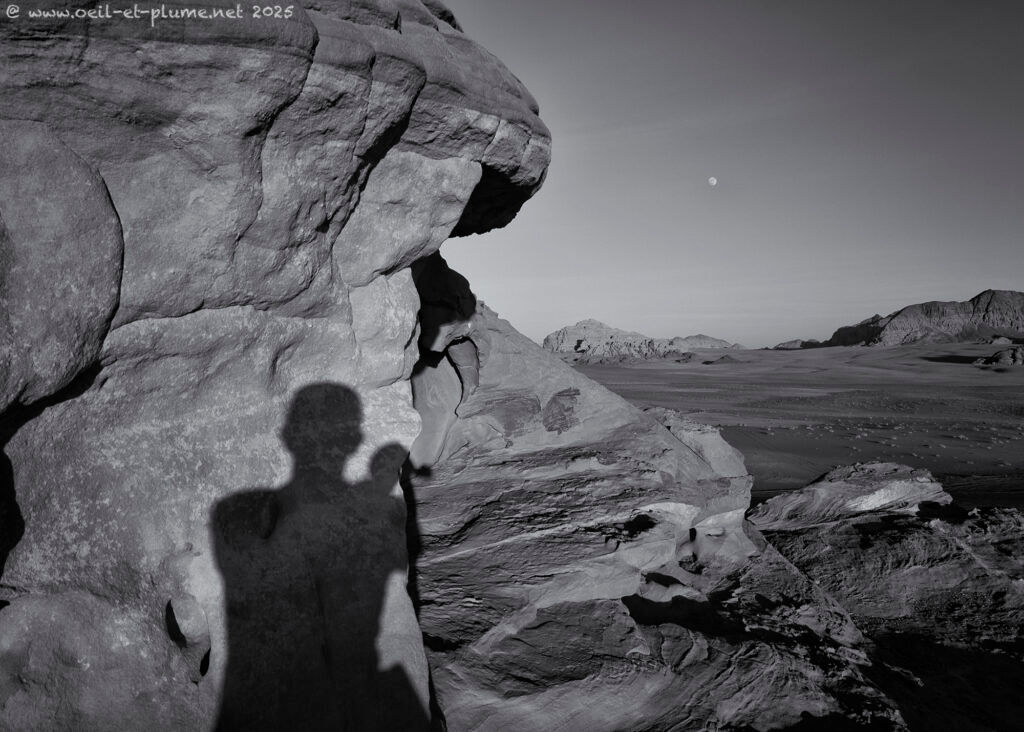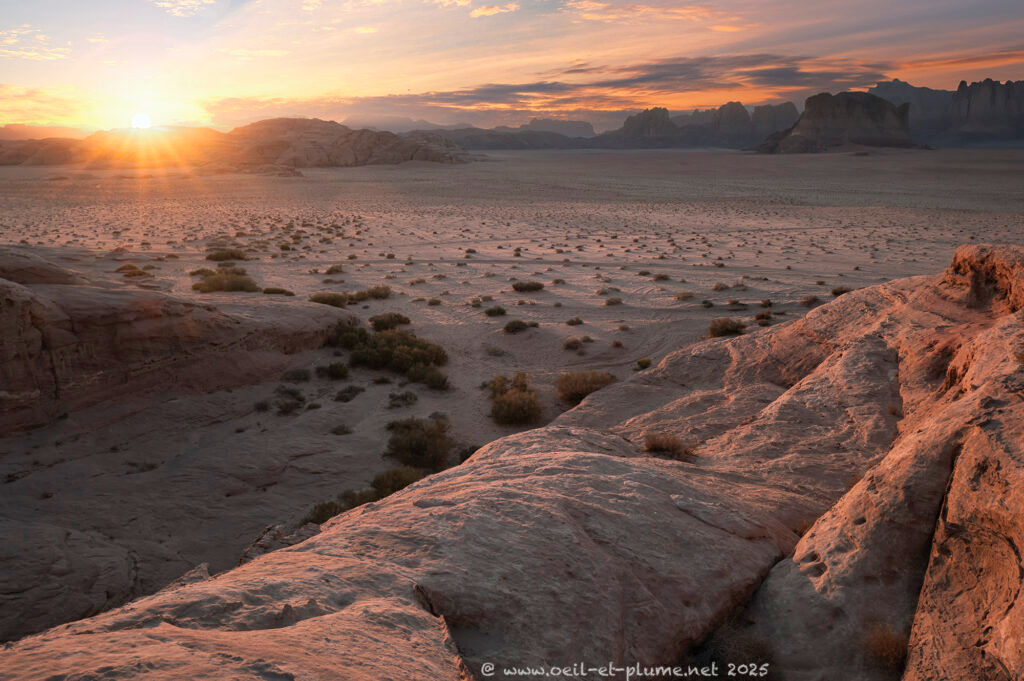Early ride
In the pre-dawn hush, the landscape feels lunar — soft sand, dark rocks, and thousands of stellar dots scattered across the sky. Gradually, the early light ignites the horizon, setting the dark sky ablaze and chasing away the lingering stars and a few lazy clouds. Mineral surfaces begin to shimmer in a wide palette of flamboyant colours. With each passing minute, the air warms noticeably.
We are deep into the Wadi Rum desert, hosted by local Bedouins. Our guide prepare the morning tea. Soon, we sip the very hot, sweet beverage, delicately infused with wild sage — a simple delight in the heart of a vast silence.
Our two dromedaries — Arabian camels — rest nearby, punctuating the desert stillness with deep, sonorous eructations. Suddenly, one rises awkwardly onto its long, slender legs, ready to move on.
“I have to go look for my camel herd,” says a fellow Bedouin, a cousin of our guide. His life has revolved around camels, and his weathered skin tells silent stories of countless days and nights spent beneath the desert sky.
Mounting an Arabian camel is a little adventure in itself. With a helping hand, we manage and soon, we’re ready to go. I give Cinnamon a gentle tap to set off. Our small caravan settles into a modest but steady rhythm, heading toward base camp. I much enjoy the slow, swaying motion of the ride — soothing, almost meditative.
Initially, my dromedary companion abides faithfully by the terms of our pact — a slow and steady pace in exchange for regular caresses — until a delicious-looking plant enters the picture. With a sudden halt and a forward lurch, Cinnamon disrupts both my riding balance and my fragile self-confidence as an aspiring camel rider. More vivid details here.
From that point on, our guide takes command of the caravan, gently reining in my budding dreams of a professional camel-riding future. Still, the ride left its mark. It connected me, in a quietly profound way, to the spirit of the Wadi Rum desert. The experience made me serene and happy.
Wadi Rum wisdom
About a century ago, Thomas Edward Lawrence — better known as Lawrence of Arabia — likely felt a similar, irresistible pull when he crisscrossed Wadi Rum. British military liaison officer supporting the Arab Revolt against the Ottoman rule during the First World War, Lawrence spent several months in Wadi Rum with the troops of Emir Faisal. He led enventually their daring assault on Aqaba — the strategic coastal city still under Ottoman control in early 1917.
Before heading to Wadi Rum, I had revisited the seminal 1962 Lawrence of Arabia movie directed by David Lean which was partly filmed in Wadi Rum. Entitled Seven pillars of wisdom, Lawrence’s autobiography also alludes to an eponymous rock formation in Wadi Rum and ultimately to the Book of Proverbs in the Ancient Testament. Although both references entail not only historical facts but also approximations, they constituted important milestones for my mind during my Wadi Rum experience.
Proofs of life
Today, Wadi Rum is peaceful and quiet, but far from lifeless. The desert, though seemingly barren, is paradoxically rich in both plant and animal life. Even the minerals appear animate, as the rock formations reveal astonishingly organic shapes carved by time and wind.
Yet life here is hard. As in other arid regions of the world, survival demands extraordinary adaptation. Desert plants are often tough and wiry, with small or no leaves to reduce water loss, and spines to ward off hungry herbivores. Most animals are nocturnal, retreating to shade or underground burrows during the searing heat of the day. They draw moisture from their food and conserve every precious drop of water with remarkable efficiency.
Water is scarce in the Wadi Rum desert. Though scattered water points, wells, natural springs, and underground sources do exist, none are easily detectable — and there are no true oases in Wadi Rum. This is precisely why the deep knowledge of local Bedouins is essential for survival. Their intimate understanding of the land, passed down through generations, makes life possible in such an unforgiving environment.
Hints of life
Humans are few in Wadi Rum. Aside from our Bedouin hosts, we scarcely encountered anyone else. The semi-nomadic communities that once roamed these sands have largely settled in villages on the desert’s periphery. Today, only a handful of elders still practice the traditional lifestyle, moving through Wadi Rum with their dromedaries, goats, and dogs. Local eco-tourism was at a seasonal low — the intense summer heat and ongoing regional instability had quieted even the usual trickle of visitors. And as for Lawrence of Arabia, he was nowhere to be found in his elusive hideout somewhere among these timeless rocks.
And yet, my mind encountered many souls across the Wadi Rum desert. Most were petrified, gigantic, human-like figures sculpted by wind and time, often curious, sometimes menacing. Again and again, I was reminded of the trolls of Iceland. Furthermore, I sensed discreet presences, pairs of stone eyes watching us quietly, their gaze filled with sky.
I also discovered the delicate legacies of the Nabataeans, etched into the rock over a thousand years ago — stone carvings whispering of a distant past. In other formations, my soul recognised the outlines of Art Nouveau architecture, as if Gaudí and his fellow modernists had once wandered here and drawn inspiration from these surreal, organic forms. I could go on listing such traces of life — silent, enduring hints of spirit — that still dwell in the vastness of Wadi Rum.
As the sun — the relentless engine of the Wadi Rum furnace — nears the horizon, the landscape transforms. Shadows stretch and shift, casting the rock formations into strange, unexpected shapes. Life begins to wind down. Silence deepens. People retreat to their base camps for the night. So did we, returning each evening to rest, and to explore a different realm of sensations.
Yet my adventurous mind, eager to seize every minute of outdoor life in Wadi Rum, often refused to follow such logic. The golden hours were golden opportunities for visual creativity, when light and shadow conspired to awaken the imagination. This is how I met with the Moon, with whom I ran in Wadi Rum more than a decade ago.
Epilogue
According to biblical scholars, the seven pillars of wisdom are the fear of the Lord, knowledge, understanding, prudence, counsel, instruction, and discretion. I wonder whether my third journey through Wadi Rum brought me closer to wisdom. I believe it did. The desert’s stunning beauty — silent, vast, and humbling — gently guided me along that path.
Cheers,
